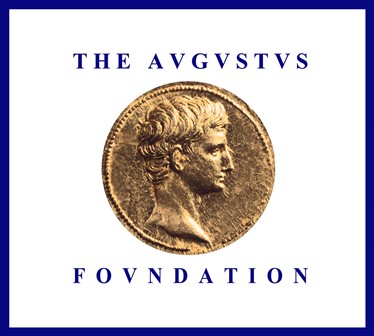
|
 |
- Home
- News
- Team
- Databases
- Conferences
- Oxford Studies on the Roman Economy
- Coin Hoards of the Roman Empire Project
- Affiliated Projects
- Publications
- Bibliographies
- Working Papers
- Links

Shipwrecks Database
Database coordinator: Andrew Wilson
| No. | Country | Sea Area | Wreck Site | Name | Depth | Height |
| Provenance | Destination | Amph | Ma | Col | Blck | Sarc | |||||||
| 41. | -40.0 | 35 | -25 | -1 | Northern Italy | 1 | |||||||||||||||
| 42. | -33.0 | 29 | 1 | 100 | 1 | ||||||||||||||||
| 43. | 50 | 150 | Northern Italy | 104 | |||||||||||||||||
| 44. | -35.0 | 21 | 1 | 100 | 1 | ||||||||||||||||
| 45. | -12.0 | 8 | 1 | 100 | Cos | Northern Italy | 1 | ||||||||||||||
| 46. | -24.0 | 0 | 75 | 125 | 11 | ||||||||||||||||
| 47. | 0.0 | 0 | 200 | 400 | 301 | ||||||||||||||||
| 48. | -34.0 | 3 | -125 | -75 | 101 | ||||||||||||||||
| 49. | -100 | -1 | |||||||||||||||||||
| 50. | -40.0 | 10 | 1 | 100 | Rhodes | Northern Italy | 1 | ||||||||||||||
| 51. | -100 | -25 | |||||||||||||||||||
| 52. | -7.0 | 0 | 100 | 300 | 1 | ||||||||||||||||
| 53. | -30.0 | 0 | 320 | 340 | 1004 | ||||||||||||||||
| 54. | -42.0 | 0 | 1 | 75 | 1 | ||||||||||||||||
| 55. | -150 | 400 | |||||||||||||||||||
| 56. | -20.0 | 5 | 1 | 100 | Rhodes | northern Italy | 1 | ||||||||||||||
| 57. | -39.0 | 0 | -50 | -1 | 3 | ||||||||||||||||
| 58. | -30.0 | 0 | -30 | 200 | 1 | ||||||||||||||||
| 59. | 1 | 100 | 0 | ||||||||||||||||||
| 60. | -36.0 | 25 | -25 | 75 | 1 | ||||||||||||||||
Abbreviations: Amph = Amphorae; Ma = Marble; Col = Columns; Blck = Blocks; Sarc = Sarcophagi;
About the database
This database aims to catalogue all known ancient wrecks in the Mediterranean up to AD 1500 to provide a basis for quantitative analysis over time, building on the seminal work of A.J. Parker, Ancient Shipwrecks of the Mediterranean and the Roman Provinces (Oxford: BAR International Series 580, 1992), and the database from Julia Strauss’s PhD. thesis entitled Roman Cargoes: Underwater Evidence from the East (London 2007), which aimed at categorizing those wrecks pertinent to a PhD. study of transport of goods from the Eastern Mediterranean. Julia Strauss has updated the database by going systematically through the relevant maritime archaeology journals and other literature published since 1992.
Inclusion in the database has been limited to finds that are assumed to have come from a shipwreck rather than simply lost or dumped overboard. An impressive number of wrecks (around 600) have been discovered since 1992, some in deep water reflecting the growing use of submarines and Remotely Operated Vehicles, some on land where construction work has taken place in what used to be a port and some in areas where specific marine exploration has been carried out.
In the above tableview, wrecks have been classified with the following information: wreck site, wreck name, sea area, country, region, latitude and longitude (where available), period, place of origin and place of destination (as far as possible), minimum and maximum depths, and a selection of cargo finds. If you click on the wreck name, you can go to a page with more information about the cargo, hull remains, shipboard paraphernalia and ship equipment.
The dating of the wreck depends almost wholly on the analysis of any goods on board and even this can be vague if amphorae, for example, are not of a specific type that can be dated accurately. If there is no cargo at all, then a ship can be dated by dendrochronology and Carbon-14 dating. The depth of the site can be precisely recorded if examined by divers, but many sites were discovered by sponge divers and fishermen in the early twentieth century who were unable to measure depth accurately or had no interest in doing so.
Latitude and longitudes are NOT to be taken as accurate: precise locations are not revealed by excavators so as to prevent pillaging and it was the aim of this database simply to log them for general mapping purposes. Details of references (for example, article titles) are limited due to a shortage of space and all references before 1992 are included in Parker.
To cite this database please use the following reference: Strauss, J. (2013). Shipwrecks Database. Version 1.0. Accessed (date): oxrep.classics.ox.ac.uk/databases/shipwrecks_database/
An original, frozen version of the database can be downloaded here (zip)
Webdesign, databasedesign: Miko Flohr, 2010-2024. Content: OXREP, 2005-2024.
